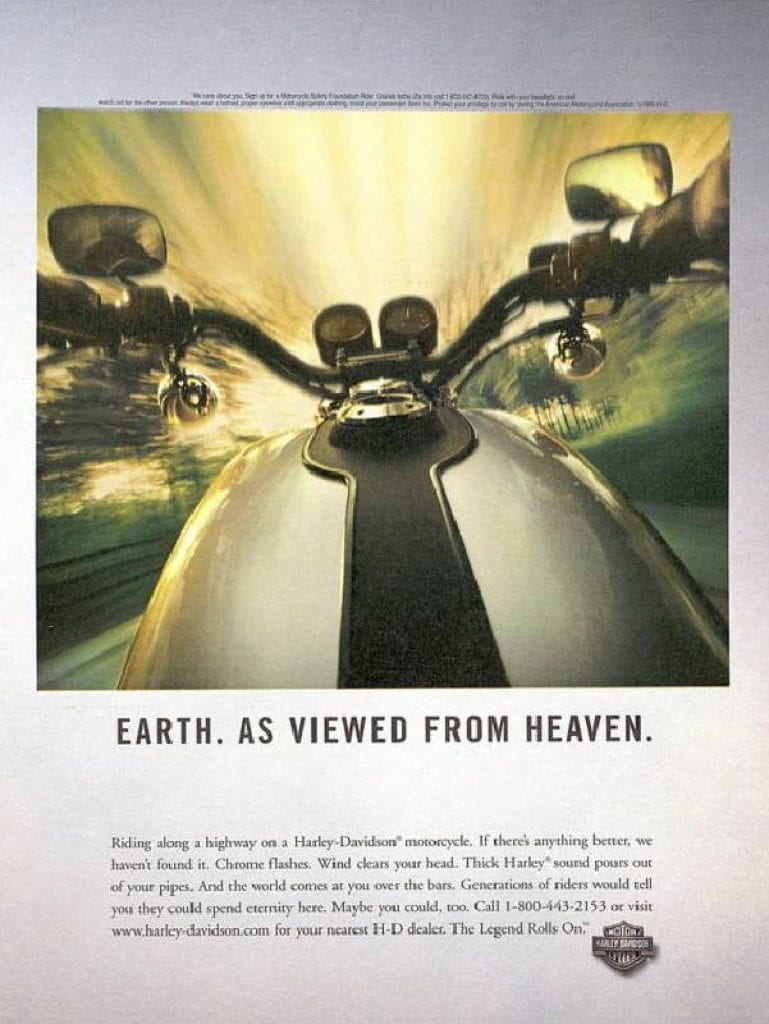When I first heard that Harley-Davidson was set to become a “lifestyle” brand, I felt mildly outraged. As a born Sconnie, the Harley-Davidson brand means something particular to me – and hearing people say Harley was attempting to become “Goop, but for gearheads” kind of set me off.
But after actually watching the much-ballyhooed “Breathe” ad that agency Droga5 created, I understood exactly what Harley was trying to do. The company wasn’t trying to become a lifestyle brand. Turns out, Harley-Davidson already is and has always been one. Instead, the company was trying to shift the definition of what being a Harley rider means – while staying true to their existing brand identity.
Brands Need to Be What They Are – Even as They Pivot
A Harley is and always has been a “wellness tool,” if you define that term a certain way. As far back as the ’90s (which is about as far back as I remember), Harley-Davidson has pitched their hogs as an escape from the the trials and travails of normal life. They are a tool that Harley riders use to clear their minds, feel the thrill of the world rushing past them, and join a community of other riders.

It just so happens that that existing community of Harley riders is getting older – and not many new riders are coming in to replace them. Having recognized that, Harley-Davidson has been looking for a way to reach younger demographics for years. The “Breathe” campaign is just Harley’s latest attempt to sell the benefits of owning and riding a motorcycle to those under the age of 50.
Those benefits (again – escaping the drudgery of daily life, going real fast, and joining others just like you) are the same as they’ve always been. Droga5 just found a different, and uniquely Millennial, way to pitch them. Which is exactly what a “brand refresh” campaign like this is supposed to do.
Did the “Breathe” Campaign Succeed?
Now, I’m not sure Droga5’s ads succeeded (and ultimately, my opinion doesn’t matter much – Harley-Davidson’s sales do). The “Breathe” ad, in particular, feels a bit heavy-handed to me, though I like its overall aesthetic and message. “Magic Hour” is more up my alley – but it alone likely would not have attracted the media attention Harley-Davidson is enjoying now. “Magic Hour” is fairly conventional, especially in comparison to “Breathe.”
Ultimately, “Breathe” made me feel something, and provoked a strong enough reaction that I felt the need to write about it. If that’s not a sign of a successful ad campaign, then I don’t know what is.




